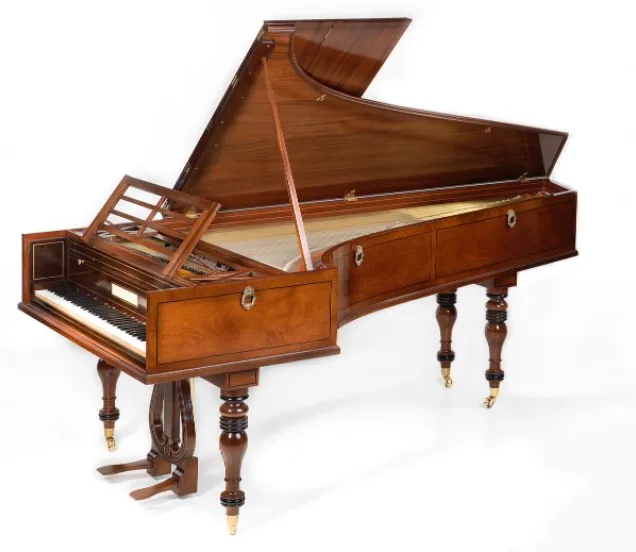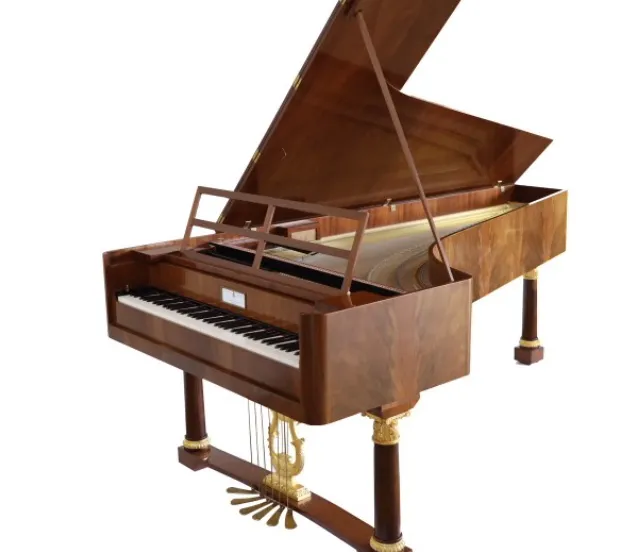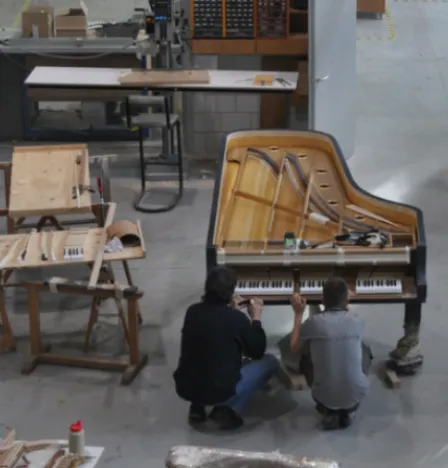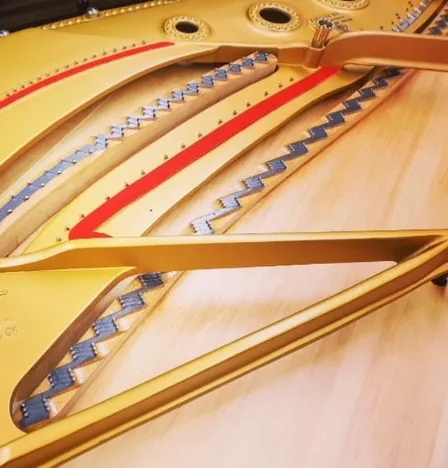Context: How Beethoven shaped the evolution of the piano.
Each period, the lightly built and brightly sounding 18th century instruments with 5 octaves underwent a continuous metamorphosis into robust pianos with metal reinforcements and 6 1/2 octaves, thicker strings and larger hammer heads, resulting in a heavier touch response. Meanwhile, the pianoforte developed in three important centres: Vienna, London and Paris, each with their own building schools and typical characteristics. They competed with each other with constant innovations to conquer the European market. Successive changes in keyboard size, case construction, frame, soundboard, action, hammers and pedals resulted in an ever-increasing sound.
In Beethoven's time, an ever-growing market quickly emerged. Whereas the harpsichord was still the privilege of the aristocracy until the middle of the 18th century, the pianoforte became the living room instrument of the bourgeoisie.
Thus piano building evolved from craft to industry. At the end of the 18th century, Anton Walter was making 30 instruments a year. Twenty years later Conrad Graf was building more than 100 pianos a year, while Broadwood was already producing several hundred instruments. The number of piano builders also grew enormously. At the end of the 18th century, there were about 10 builders active in Vienna, 20 years later there were more than 50.
By the time of Beethoven's death in 1827 the piano had evolved so much that various builders already had all the elements of the modern grand piano: keyboard size of 7 octaves, Erard's double-action mechanism, Pape's felt hammerheads, Pape's cross-stringing, Erard's metal frame of 1822, Pleyel's of 1825. Between the 1770s and 1830s, the piano evolved more than in all the subsequent years.

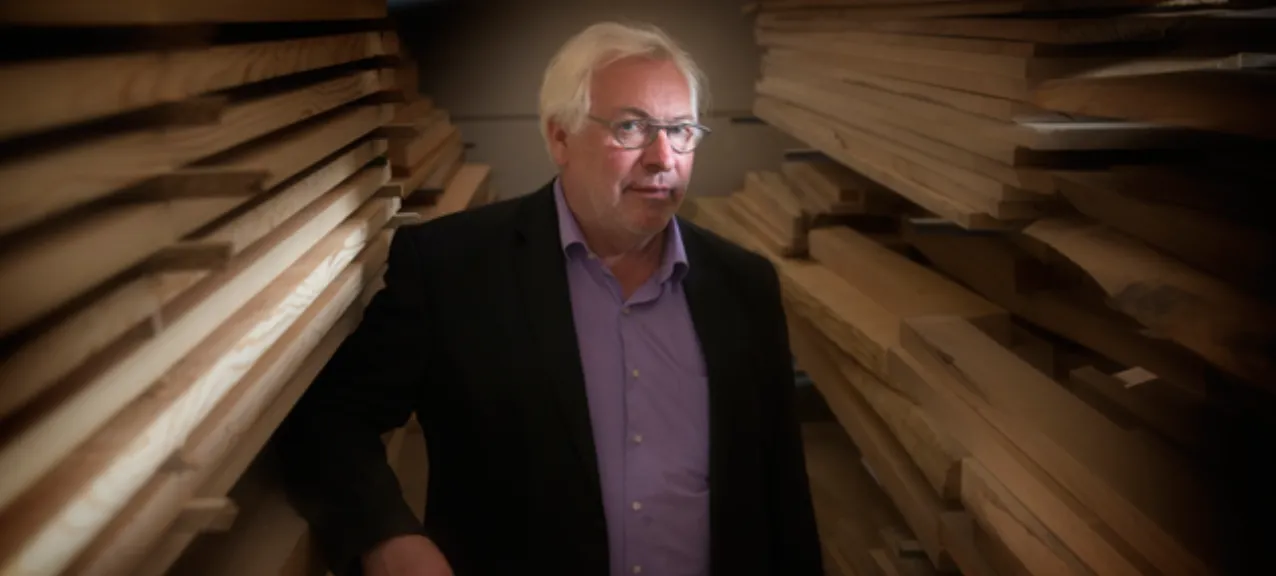
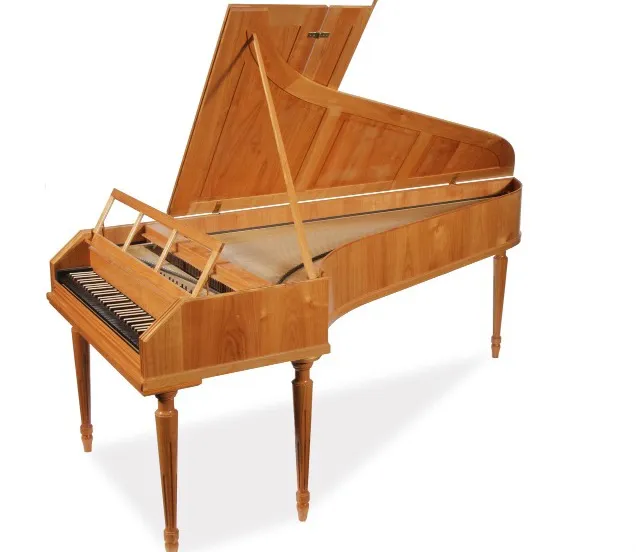
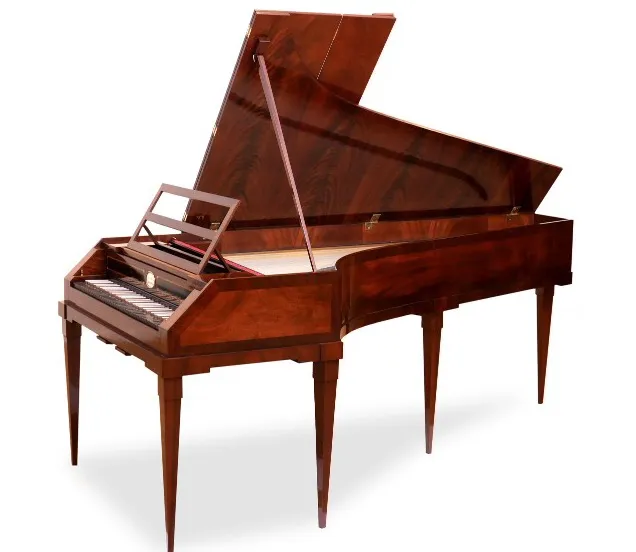
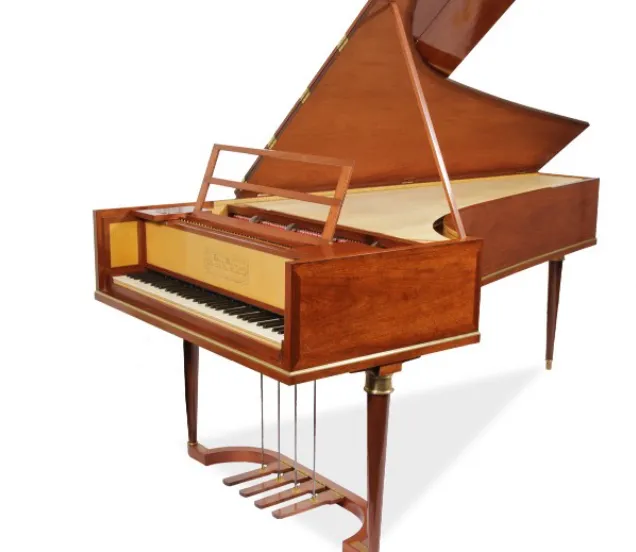
.webp)
